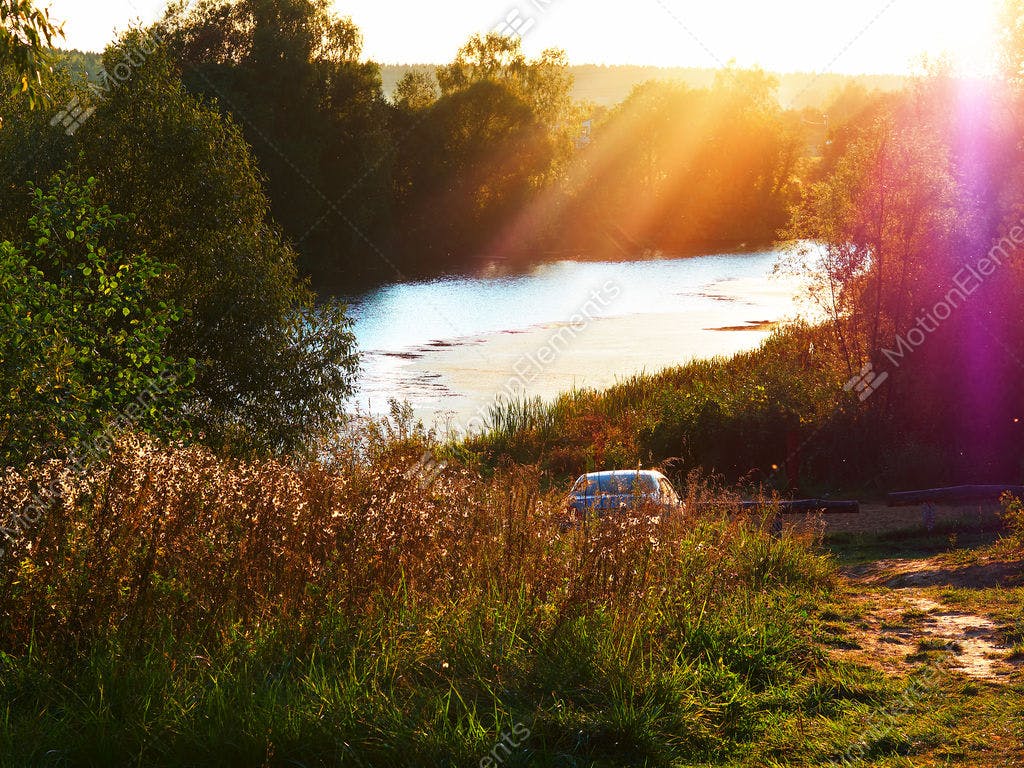Light leaks, much like lens flares, are a fantastic way to add a touch of creativity and a vintage feel to your video projects. This article will explore how to effectively use light leaks to enhance your videos, providing step-by-step guidance on techniques, tools, and practical tips to achieve cinematic effects.
Light Leaks templates from Premiere Pro in Motion Elements
Light Leaks templates from FCP & Motion in Motion Elements
Understanding Light Leaks
Definition and Origins
Light leaks occur when light accidentally enters the camera, often through gaps in the body, creating streaks or patches of light on the film or sensor. This phenomenon was common in older film cameras and is now often replicated digitally to add a nostalgic or artistic touch to videos.
Natural light leaks can add a sense of authenticity and spontaneity to your footage, while digital light leaks offer more control and consistency. Both types can be used to evoke emotions, set a mood, or enhance the storytelling in your video editing projects.
Differences Between Natural and Digital Light Leaks
Natural Light Leaks:
- Created by exposing film or digital sensors to light unintentionally.
- Often unpredictable and unique.
- Adds a raw, organic feel to footage.
Digital Light Leaks:
- Generated using video editing software.
- Highly controllable and customizable.
- Can be replicated consistently across multiple projects.
Creating Light Leaks
DIY Methods for Capturing Natural Light Leaks
If you prefer the authenticity of natural light leaks, there are several DIY methods to capture them:
- Plastic Wrap Method: Cover part of your lens with colored plastic wrap or a clear plastic bag, allowing some light to seep through.
- Shooting with a Film Camera: Use an old film camera with slight light leaks. Developing the film will reveal beautiful, organic light streaks.
- Lens Whacking: Detach your lens slightly from the camera body while filming, allowing light to leak in. This technique requires practice but can yield unique results.
Recommended Tools and Software for Digital Light Leaks
Digital light leaks can be created using various video editing software, including:
- Adobe Premiere Pro: Offers plugins and built-in effects to generate light leaks.
- Final Cut Pro: Features similar tools and plugins for adding light leaks.
- After Effects: Provides advanced options for creating and customizing light leaks.
Incorporating Light Leaks into Your Projects
How to Blend Light Leaks Seamlessly with Your Footage
To blend light leaks seamlessly with your footage, consider the following tips:
- Match the Lighting: Ensure the light leak matches the natural lighting of your scene. Adjust the color and intensity as needed.
- Use Subtle Movements: Apply light leaks with gentle, subtle movements to avoid distracting the viewer.
- Timing: Position light leaks at key moments in your video to enhance emotional beats or transitions.
Tips for Positioning and Timing Light Leaks for Maximum Impact
Positioning and timing are crucial for effective use of light leaks:
- Entry and Exit Points: Use light leaks at the beginning or end of scenes to create smooth transitions.
- Emotional Peaks: Apply light leaks during emotional or dramatic moments to amplify the impact.
- Pacing: Sync light leaks with the rhythm of your video, whether it's fast-paced action or slow, contemplative scenes.
Using Color Grading to Enhance the Look of Light Leaks
Color grading can significantly enhance the appearance of light leaks:
- Hue and Saturation: Adjust the hue and saturation to match the mood of your video. Warm hues can evoke nostalgia, while cool tones can create a more modern, ethereal feel.
- Contrast and Brightness: Modify contrast and brightness to ensure light leaks blend naturally with your footage.
- LUTs (Look-Up Tables): Use LUTs to achieve consistent color grading across your project, harmonizing the light leaks with your overall color palette.
Best Practices
Avoiding Overuse and Maintaining Subtlety
While light leaks can add a beautiful touch to your videos, it's important to avoid overuse:
- Subtlety: Keep light leaks subtle to prevent them from overpowering your footage. Less is often more.
- Context: Use light leaks where they naturally fit within the narrative and visual style of your video.
- Balance: Combine light leaks with other effects like lens flares and bokeh for a balanced, layered look.
Combining Light Leaks with Other Effects Like Lens Flares and Bokeh
Combining light leaks with other effects can create visually rich and dynamic scenes:
- Lens Flares: Use light leaks in conjunction with lens flares to enhance the dreamy, cinematic quality of your footage.
- Bokeh: Add bokeh effects to create a soft, out-of-focus background that complements the light leaks.
- Transitions: Use light leaks and lens flares during transitions to create smooth, visually appealing cuts.
Conclusion
Light leaks are a powerful tool for adding cinematic magic to your videos. Whether you capture natural light leaks or create digital ones using video editing software, they can enhance the visual appeal and emotional impact of your projects. By understanding how to create and incorporate light leaks effectively, you can elevate your video editing skills and produce stunning, professional-quality videos.
Encourage readers to experiment with light leaks and share their results. Highlight the creative potential of this effect in making their videos stand out. With practice and creativity, light leaks can become a valuable addition to your video editing toolkit, helping you achieve the cinematic look and feel you desire.
